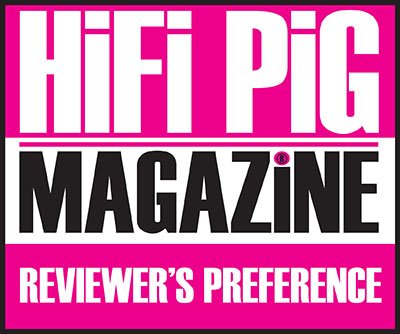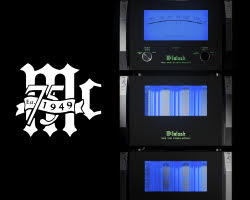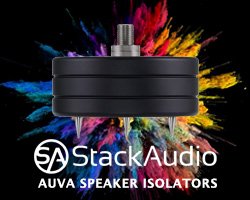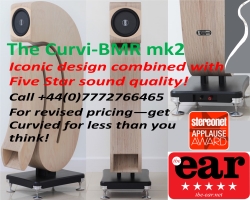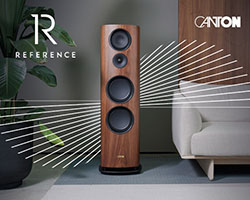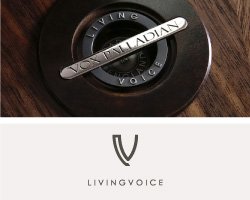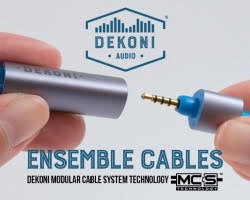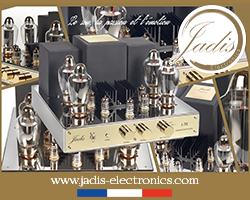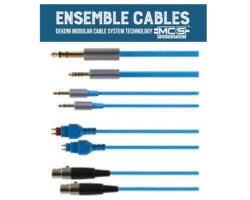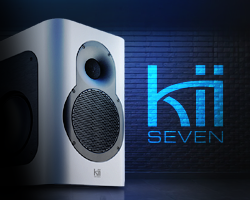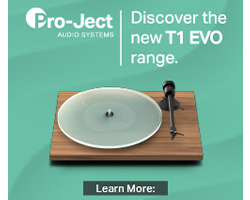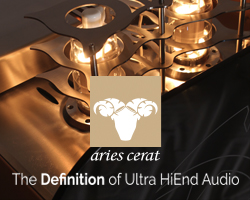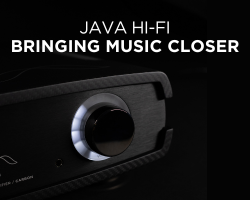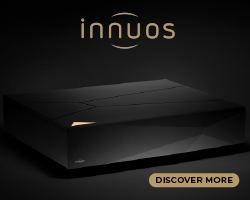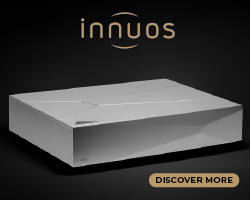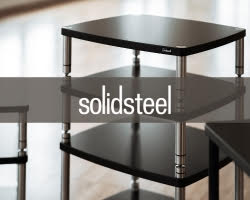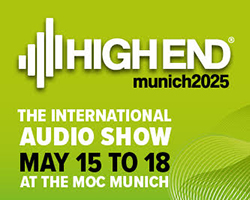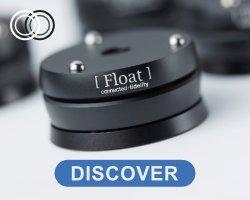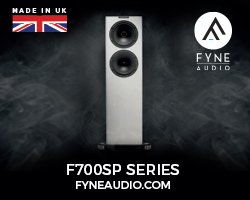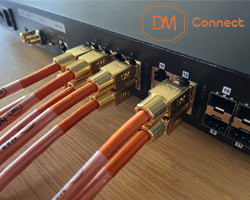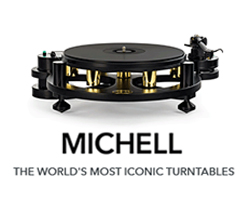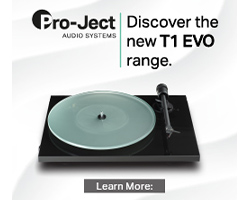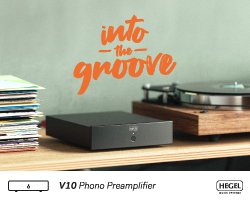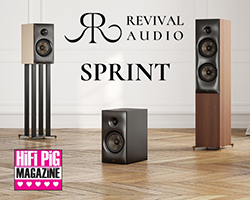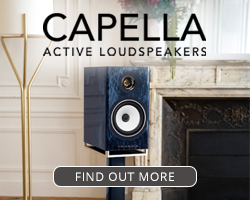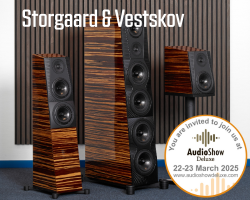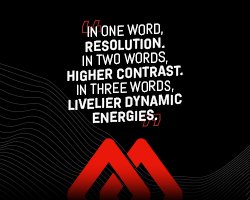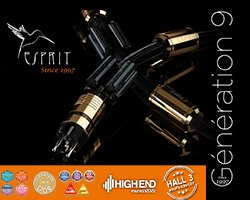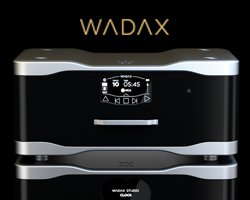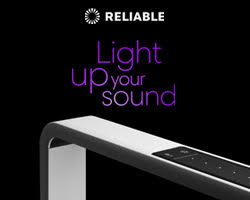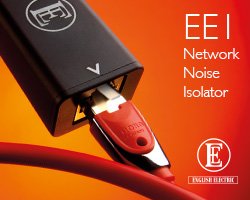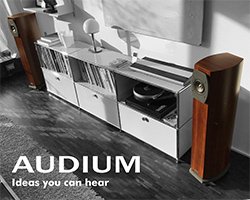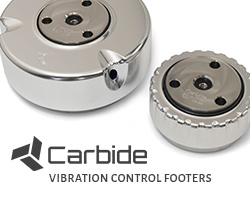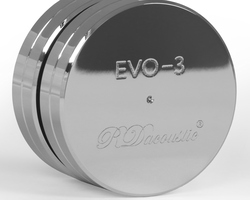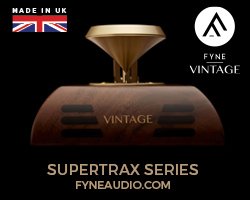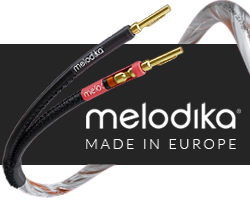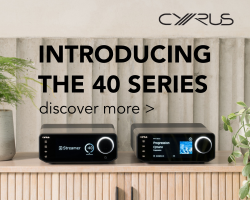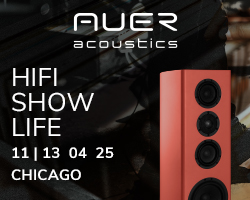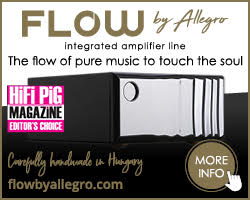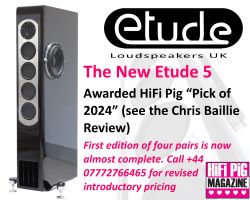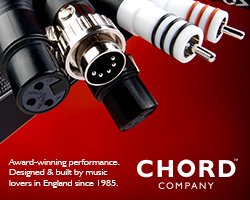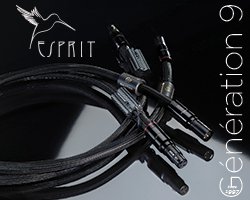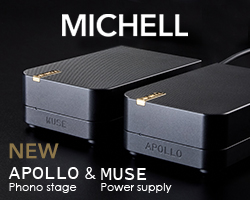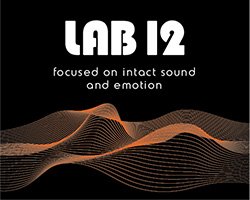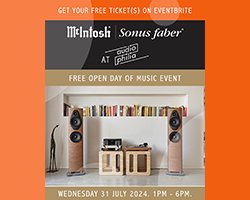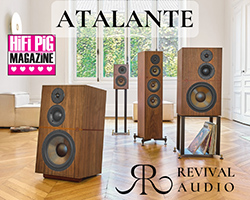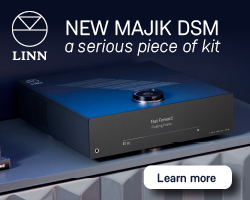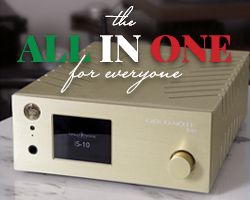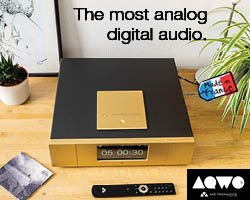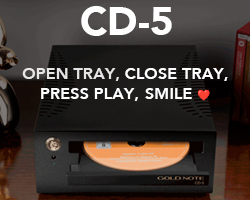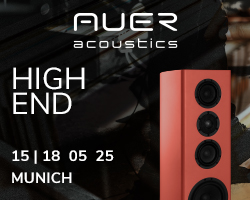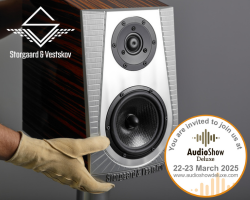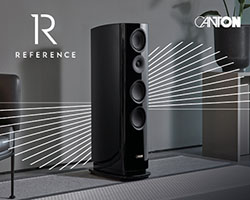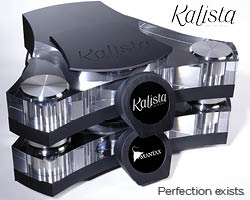AUDIOSOLUTIONS FIGARO S2 FLOORSTANDING SPEAKERS REVIEW
AudioSolutions´ highly regarded Figaro series speakers have just received a significant makeover, borrowing cabinet technology from the (still) higher-end Virtuoso range and a bunch of finishing options up to and including complete customization. Eric van Spelde puts them on the test bench and comes away impressed.
DESIGN AND FEATURES OF THE AUDIOSOLUTIONS FIGARO S2
AudioSolutions was founded in 2011, in Lithuania, by speaker engineer Gediminas Gaidelis after having built speakers for the local market under the name GSP (Gediminas SPeakers) from the tender age of 16. All aspects of the design and manufacture of all AudioSolutions speakers are still done at their headquarters in Vilnius. No Chinese labour or parts to be found here, with everything sourced from within the EU. AudioSolutions manufactures its cabinets in its factory, with drive units sourced from leading producers including SB Acoustics, SEAS, and Scan-Speak. The Figaro line was introduced in 2018, completely overhauled last year, and represents AudioSolutions´ most successful line of speakers to date – the S2s being the smallest floorstanding model in the range at 95 centimetres height and a slim 23 cm width. They´re relatively deep, though at a shade over 40 centimetres. There are four drivers – two 6-inch bass drivers, a midrange unit of the same size and a dome tweeter – relatively small at 19 mm, but we’ll get to that later – and a pair of rear-firing ports. The side walls of the cabinet are curved and asymmetrical, making the speakers narrower at the rear than at the front.
Opening the cardboard boxes of the speakers – the accessories for a pair of Figaros come in a nice, wooden box – was a bit of a shock. By golly, these are very blue, so blue that Eiffel 65 seems to have made a song about them, in fact – at first glance, they looked as if they´d be more at home in the lounge of Papa Smurf than in our décor, which is mostly different shades of yellow/orange/red with a bit of complementary purple/violet for good measure. Then you put them in their rightful places and notice that the satin finish slightly changes its hue with different natural and artificial light conditions and most of the time takes a rather more subtle, slightly metallic-like appearance more like on the pictures of this particular colour that AudioSolutions put on their website. Shrinking violets, however, they´re not. The blue is one of six ´Bespoke´ finishes, all featuring the same vertical brass-coloured vertical inlay at the sides and badging, with satin anthracite top and bottom panels. Beyond that, you can specify your Figaros in any colour and just about any finish that tickles your fancy. A configurator for this customization program, offering myriad possibilities, will be introduced on the AudioSolutions website concurrently with the Munich High-End show in May.
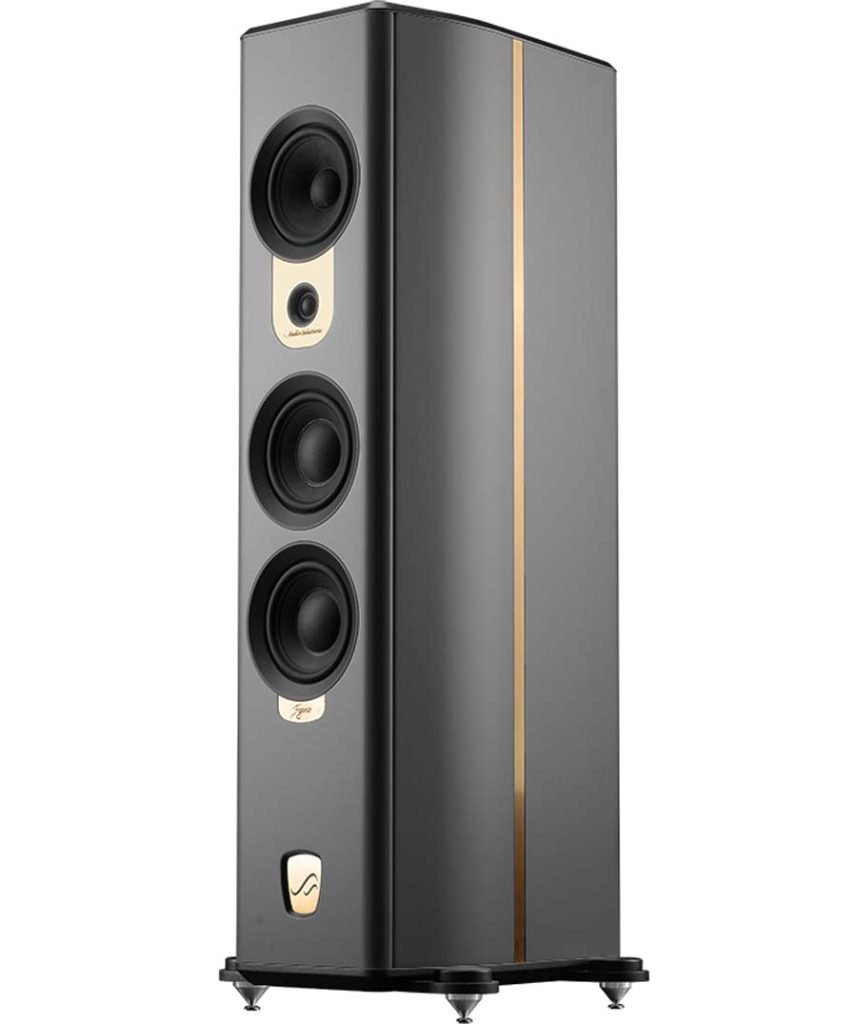
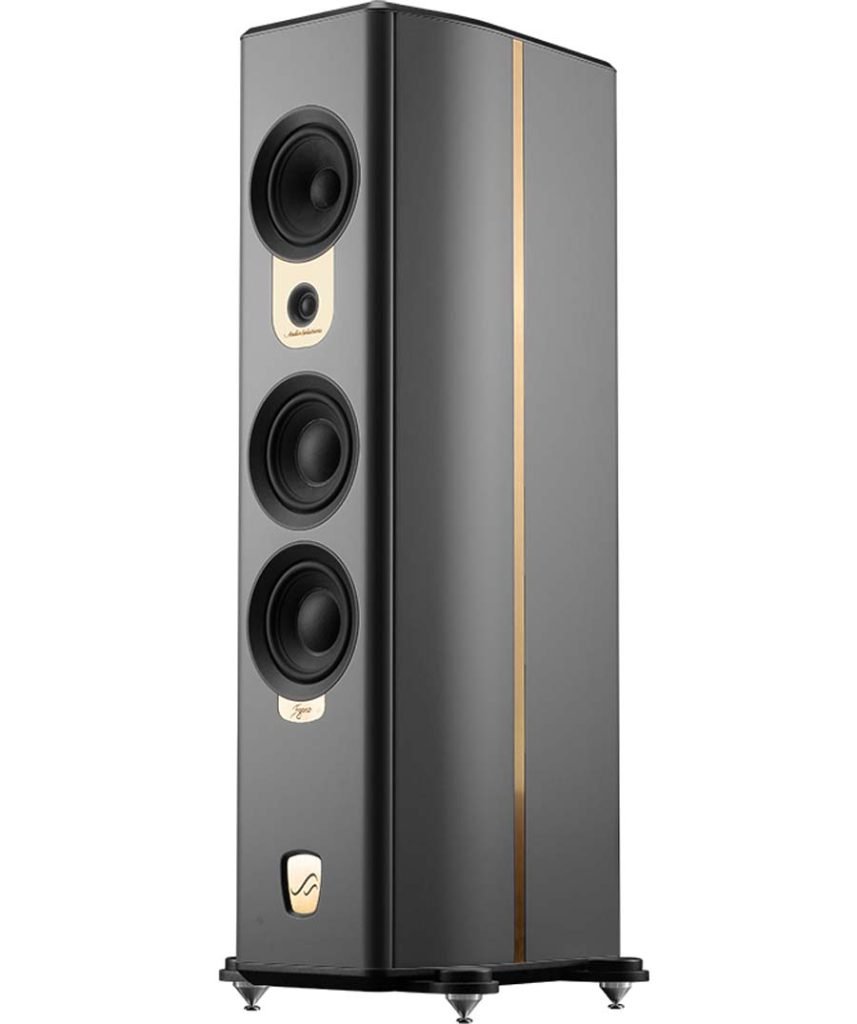
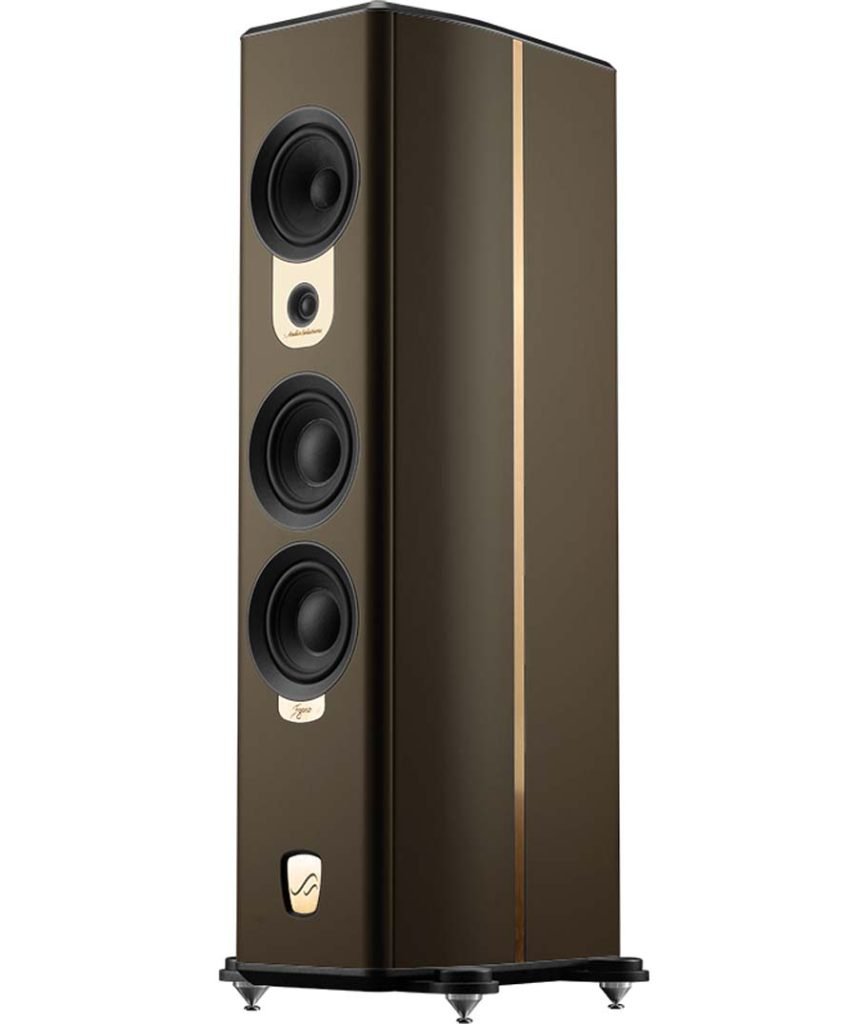
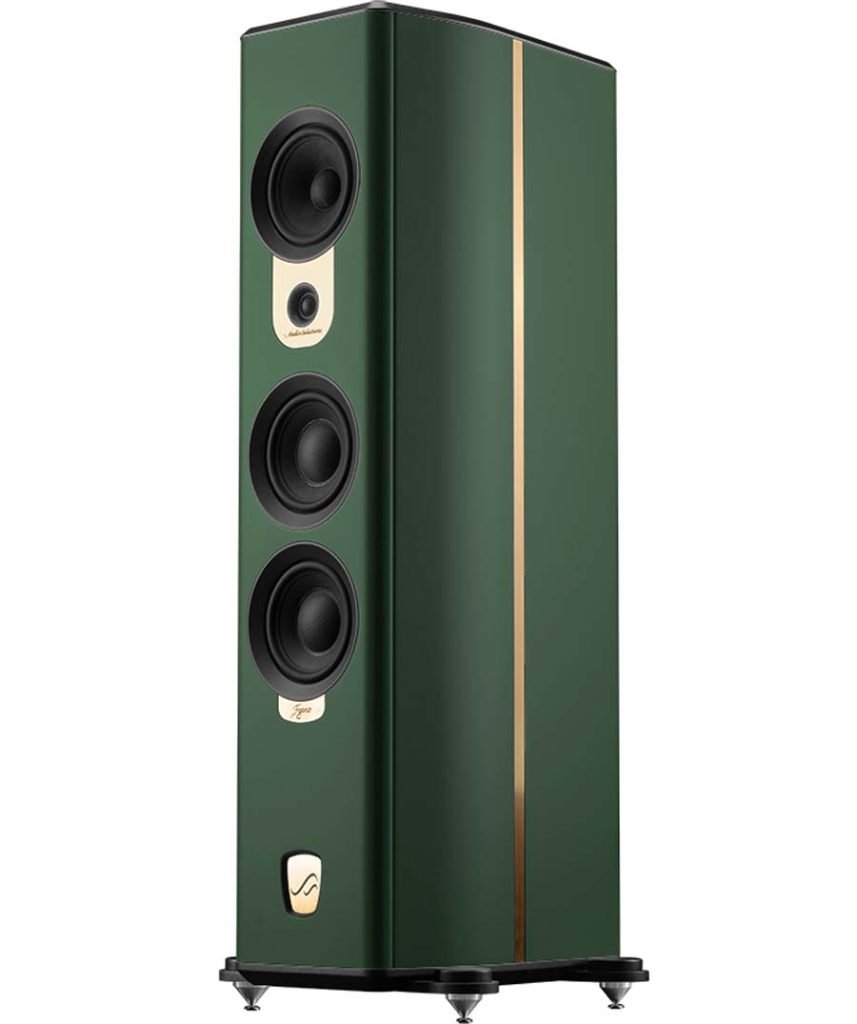
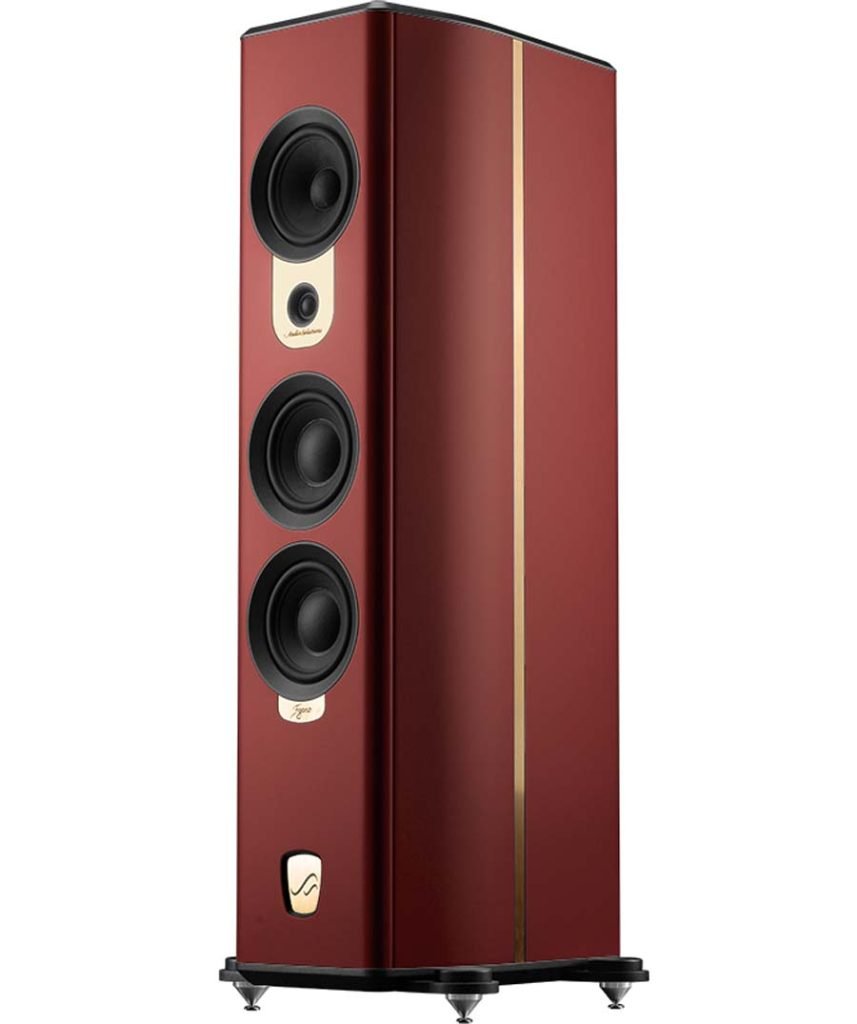
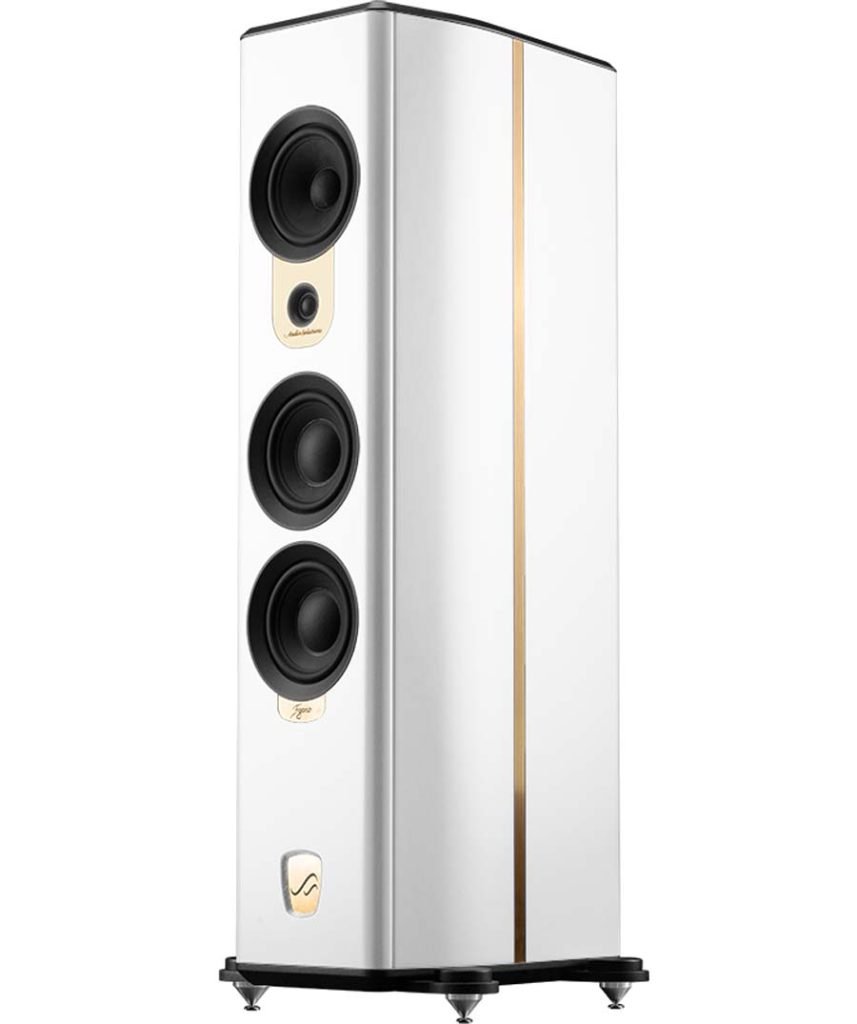
However, there´s a lot more to the Figaro S2s than classy, daring finishes and customization options. With the exception of using third-party drivers, the depth of in-house engineering at AudioSolutions is on a level with the big-brand high-end US names of which the price lists tend to start well up in the five-figure range. A prime example is the ´cabinet in a cabinet´ enclosure, which has trickled down from the flagship Virtuoso series into the second-generation Figaros. Although simple in principle, being based on sound energy dissipation into heat and slow decay of small residue energy which is achieved through fast energy transfer from the light and rigid inner box – which cannot store energy, only dissipate it – through a damping barrier to an outer box that dampens and stores residual energy, it involves a most difficult process of calculating and measuring resonances that one wants to eliminate.

A similar story is the crossover design. According to Gediminas, you can make relatively poor drivers sing with proper crossover design and development, but if you don´t put in the work to the nth degree, even using the best drivers in the world won´t save you. While the development starts with having a mathematical model as an ideal target that is correct, this is no more than a start. In a real situation, you have to take into account a lot of parameters rather than just the SPL graph. AudioSolutions uses sophisticated software that can super accurately simulate driver, cabinet, and crossover interaction in a given volume. Usually, about 30 different crossover types are being tested. And all that is only in the pre-defined crossover points; when it transpires that there is a problem with these, the game starts anew. After that, the choice is narrowed down to usually three advantageous crossovers and they start a listening test. During extensive hours of listening tests, the team tries to find anything that is audibly incorrect tiring, or simply unnatural and re-measures that specific frequency or modulation of frequencies until the problem is identified and fixed. As the tonal balance starts to be embedded in the listeners´ memory, a few days´ break is being taken to reset that memory. And before final confirmation, usually, it is a one-month break. Only after all sounds good then, is the final concept approved. Having said that, AudioSolutions works from some basic principles throughout their speaker range, one of which is avoiding crossover points in the frequency range where the human ear is the most perceptive, between 1,000 and 2,000 Hertz. In case of the Figaro S2, this results in crossover points of 400 and 4,000 Hz for the midrange. This has the added advantage of being able to choose a smaller diameter dome for the high-frequency unit, which reduces resonances and break-up modes towards the higher end of its working range. These are being further reduced by the surround which is what AudioSolutions call a ´Mini-Horn´- a wave plate (rather than a waveguide as used in the previous series of Figaro speakers) based on acoustical dampening that happens at the frontal dome area. After measuring at which frequencies the dome starts to flex and emit an avalanche of distortions, the Mini-Horn is being designed and manufactured according to the desired specifications to dampen those frequencies. The result is a proportional dampening of the tweeters’ movement: the louder it plays, the more dampening and air pressure on the frontal area it gets from its own emitted sound. Another by-product of this process is that the Mini-Horn adds sensitivity and thus improves the efficiency of the driver. The second-generation Figaro series utilizes re-designed bass drivers with ER (Extra Rigid) paper cones.

SOUND OF THE FIGARO S2
What does all of this mean in pure sonic terms? To properly evaluate this, we first had the Figaros fed by internet radio all day for nearly two weeks before starting critical listening (Gediminas recommends 120 hours of break-in time, while gradually upping the volume and choosing heavier sounds during this period), during which time the sound noticeably and progressively opened up. As with the Triangle Magellan Cellos reviewed prior, the limited real estate available for the setup (my Avantgarde main speakers being rather too big and heavy to tote them into the basement over the staircase…) meant that the speakers were placed close to a rear wall, about 1.8 metres apart (centre to centre) with the listening position being about 2 metres, or maybe a little bit more, from the speakers. All of the critical listening was done with a Michell Gyro SE turntable and TecnoArm2, which during the test period was successively upgraded, starting with the standard PSU and Cusis E/H high output MC cartridge playing through the phono input of a Copland CSA 28 amplifier, after which an external phono stage was used via a line level input, first the relatively modestly priced Acoustic Solid Phono Amp, later on the high-end Allnic H-1500 II SE LCR valve phono stage. Michell Cusis S and Hana Umami Blue cartridges were used, and as a final tweak both the turntable and the speakers were put on Omex Symphony 2A isolation footers. The effect of every single one of these changes was immediately and consistently notable with the Figaro S2s on the end of the system. By the time that all upgrades were in place, the overall sound was very well balanced and firmly in high-end territory in every relevant aspect.

Starting with the basics, top-to-bottom consistency was top-notch notch and the bass reached deep enough to warrant being regarded as full-range speakers. In the sort of environment these speakers are likely to end up in, it´s hard to imagine that anyone would feel the need to add a subwoofer, for listening to music at least. They´re precision instruments, too – giving lots of information for the listener to digest, not just through their transparency and accuracy in retrieving low-level details in one´s favourite recordings, but, moreover, in allowing the complexity of the sounds themselves, their tonal colours and textures to shine through. The genius in the way the Figaros are voiced, is that they have a warm, easy-going nature that doesn´t expose ´lesser´ recordings to the point that you´re not able to enjoy them anymore, yet are fast and dynamic at the same time.
Then we have to talk about the sound stage – even in these ´semi-nearfield´ conditions (possibly more akin to most people’s habitat) with lots of stuff around them, they offer ample width and depth with plenty of air around the individual parts (vocals, instruments), giving multi-layered vocal parts clarity and a halo-like shine where that was the intention of the producer. The soundstage height is a bit restricted though, but I have that problem with most smaller speakers that aren´t directly aimed at ear height (or above) in their entirety. Having said that, Kraftwerk´s Radio-Activity sounded simply majestic, the analogue synths creating an enveloping sonic picture that one could totally sink into.
CONCLUSION
With qualities like this, combined with untypically realistic pricing structures, I can see AudioSolutions, along with one or two other Eastern European manufacturers, becoming a major disruptive force on the global high-end market – which in this day and age with the gap between prices of serious HiFi equipment and disposable incomes widening by the week, is what the latter arguably needs.
AT A GLANCE
Sound Quality: Make no mistake – this is not your average medium-sized, upper medium-class column speaker – it´s a true high-end, full bandwidth speaker in slightly condensed form. They do precision, detail and dynamics to a high level – but also colour and texture. They do bass, too – warm, deep and at the same time, fast and tuneful. In smallish and medium-sized rooms, these could be all the speaker you need, even in very elevated company.
Value For Money:
In a world where it feels like every new high-end product costs twice the price of its predecessor and a cartridge manufacturer runs the risk of not being seen as ´among the best´ if it doesn’t offer an MC that costs twice the price of these speakers, AudioSolutions´ pricing policy is refreshing and extremely realistic. These cost from just over 7,000 euro with excellent build and finish, and still bring in ´Best of Show´ awards from major events – go figure…
We Loved:
The size, the satin paint finish that slightly changes to a metallic-y hue depending on the light, the build and finish which manages to match industrial precision of the highest calibre and the je ne sais quoi you only get from artisan products, the ease of drive, the fact that they can be placed close to a wall without becoming boomy or blurry, but most of all, the fact that they get so much right in a musical sense and manages to meld seemingly contrarian performance aspects at a very high level.
We Didn´t Love So Much:
Well, erm, the bright blue of the review sample did clash a bit with its environment (although it was a near-perfect match for the Hana Umami Blue cartridge used at some point)
The soundstage was a bit low for my taste and listening habits – which is a small gripe I have with most smaller speakers – from a normal height chair you´re sort of looking upon the stage from a height than standing first row in front of it. I got the most intense experience from these when sitting on a cushion placed directly on the floor. But what an experience it was…!
Elevator Pitch Review: The AudioSolution Figaro S2s aren´t your average mid-sized, middle-of-the-road, upper-middle-class column speakers; they´re a very serious high-end speaker in a slightly condensed form, giving a real taste of flagship speakers that require their own listening space built around them as well as an oligarch budget to do them justice, with ample dynamics and bandwidth for real-world living spaces and ease of drive meaning you don´t need an amplifier capable of welding – a good integrated in the lower middle four figure range will do just fine, meaning you can put more of your budget towards excellent source components and everything else that you might need to get the best from them. Most of all, they offer accuracy, precision and insightfulness and a richness of tonal colours and textures. Build quality is beyond reproach and in the rare case one can´t find a finish and colour that suits from the three levels on offer, there´s always the option for a completely personal, custom appearance!
Price: from 7,040 euro/pair (Germany)

Eric van Spelde
ABOUT THE REVIEWER’S PREFERENCE AWARD
Specifications:
Three-way, rear-ported, floorstanding loudspeakers
Dimensions (HxWxD): 950mm x 230mm x 401mm / 37.4 x 9.1 x 15.8in
Weight: 31 kg / 68.3 lbs each
Shipping weight: 34 kg / 75 lbs each
Sensitivity: 91 dB @ 2.83V 1m
Suggested amp power: 10-250 W
Impedance: nominal 4,0 ohms
Crossover frequency: 400 Hz; 4000 Hz
Frequency response (in-room environment): 35-25000 Hz
Drivers: 19mm silk dome tweeter, 15.2cm ER paper cone mid, two 15.2cm ER paper cone bass drivers



















































